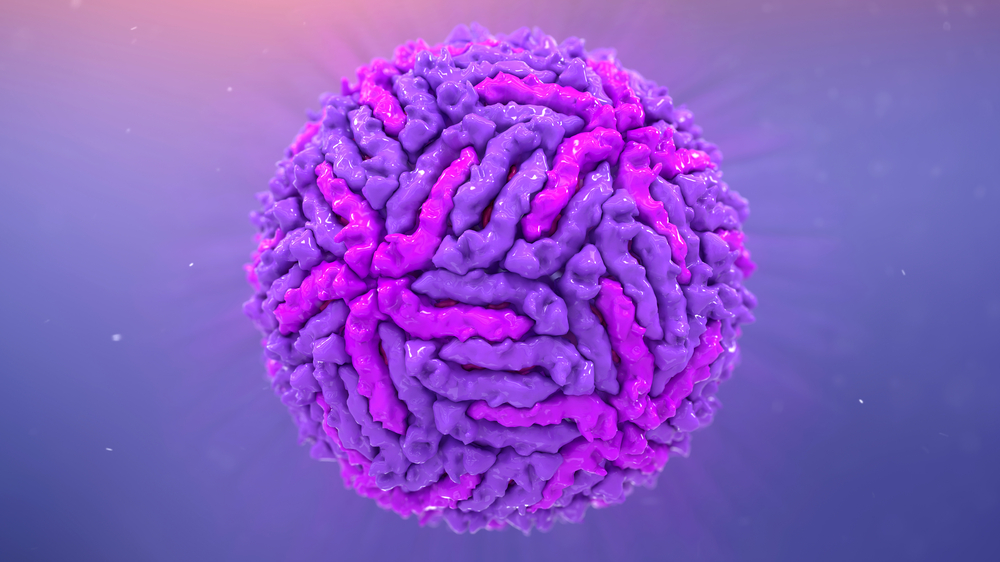HEPATITIS C VIRUS CORE ANTIGEN (HCcAg)
Hepatitis C Virus core antigen (HCcAg) recombinant protein. This core protein fragment represents part of the infectious virions inner core particle, which encloses the viral genome.
PRODUCT DETAILS – HEPATITIS C VIRUS CORE ANTIGEN (HCcAg)
- Recombinant protein produced in E. coli, >95% purity.
- Comprises HCV core immunodominant region fused to His-tag and buffered in PBS pH7.4.
- Suitable for use in ELISA, western blot, lateral flow immunoassay.
BACKGROUND
Hepatitis C virus (HCV) is a small 50nm, enveloped, single-stranded, positive sense RNA virus in the family Flaviviridae. It is the cause of hepatitis C and some cancers such as liver cancer (hepatocellular carcinoma) and lymphomas in humans. HCV has a high rate of replication, producing approximately one trillion particles/day in an infected individual, as well as an exceptionally high mutation rate, which may help it evade the host’s immune response. The virus is classified into six genotypes (1-6) with several subtypes within each genotype. The preponderance and distribution of HCV genotypes varies globally and this is clinically important in determining potential response to interferon-based therapy and the required duration of such therapy. For example, genotypes 1 and 4 are less responsive to interferon-based treatment than genotypes 2, 3, 5 and 6.
The virus capsid is formed by polymerization of the HCV core protein, a structural protein encoded by the 5’ end of the HCV open reading frame (amino acids 1–191). After translation, host signal peptidases cleave the HCV core protein antigen (HCcAg) from the precursor polyprotein and remove the signal peptide located at its C-terminus. HCcAg is antigenic, interacts with numerous cellular proteins, induces specific cellular and humoral responses, and through various pathways likely plays an important role in the pathogenesis of HCV infection.
The core antigen is a promising marker for the diagnosis of infection in humans. Its primary sequence is the most conserved sequence among the HCV proteins, making it the most versatile protein marker for HCV infection (Hadziyannis et al., 2013). Enzyme-linked immunosorbent assay (ELISA)-based HCcAg detection is widely employed in clinical practice as an auxiliary method in the diagnosis of HCV infection (Ross, 2010). Notably, HCcAg is present in blood 10 to 15 days after infection, which appears only 3 to 5 days later than HCV RNA (Buket et al., 2014; Soliman et al., 2015). Therefore, HCcAg is a useful marker for the early diagnosis of HCV infection.
REFERENCES
- Buket et al. (2014). Comparison of HCV core antigen and anti-HCV with HCV RNA results. Afr. Health Sci. 14:816–820. PMID: 25834488
- Hadziyannis et al. (2013). Is HCV core antigen a reliable marker of viral load? An evaluation of HCV core antigen automated immunoassay. Ann. Gastroenterol. 26:146–149. PMID: 24714621
- Ross (2010). Analytical performance characteristics and clinical utility of a novel assay for total hepatitis C virus core antigen quantification. J. Clin. Microbiol. 48:1161–1168. PMID: 20107102
- Soliman et al. (2015). Significance of the hepatitis C virus core antigen testing as an alternative marker for hepatitis diagnosis in Egyptian patients, Egypt. Eur. Rev. Med. Pharmacol. Sci. 19:2240–2245. PMID: 26166649

